Understanding the Differences and Uses Introduction: Tomatoes have long been an essential ingredient in various cuisines around the world. From stews and soups to pasta dishes and pizzas, tomatoes add depth and flavor to countless recipes. Two common tomato-based products that often appear in recipes are tomato paste and tomato sauce. While these two ingredients may appear similar, they differ significantly in terms of their preparation, consistency, and culinary applications. In this article, we will delve into the characteristics, uses, and benefits of tomato paste and tomato sauce to help readers understand the differences between these popular tomato products. 1. Tomato Paste: Tomato paste is a thick, concentrated tomato product prepared by cooking tomatoes for an extended period, removing their skin and seeds, and reducing them to a thick consistency. This process condenses the flavors of the tomatoes, creating a rich, intense, and slightly sweet taste. Tomato paste is generally advised to be used in smaller quantities due to its intense flavor and concentrated consistency. Uses: Tomato paste is widely used as a base ingredient in various dishes. It is commonly used to add depth and richness to pasta sauces, soups, stews, and braises. Additionally, it finds application in marinades, gravies, and curry recipes. Cooking tomato paste briefly in oil (a process called “blooming”) helps to mellow its flavor, balancing the intensity and reducing any bitterness. Benefits: Tomato paste offers a number of benefits due to its high concentration of antioxidants, essential vitamins (such as vitamin A and C), and minerals (such as potassium). It also contains lycopene, a powerful antioxidant known for its potential health benefits, including reducing the risk of certain types of cancer and promoting heart health. 2. Tomato Sauce: Tomato sauce, on the other hand, refers to a cooked sauce made primarily from tomatoes but includes a variety of additional ingredients such as onions, garlic, herbs, and spices. This results in a smoother, more liquid consistency compared to tomato paste. Tomato sauce typically has a milder flavor profile compared to tomato paste since it is diluted by other ingredients. Uses: Tomato sauce is the go-to ingredient for several classic dishes. It is commonly used as a base for pasta sauces, pizza sauces, and as a dip for appetizers like mozzarella sticks. Tomato sauce is versatile and can be seasoned and customized based on personal preferences or specific recipes. Benefits: While tomato sauce may have slightly fewer nutritional benefits compared to tomato paste due to its dilution with other ingredients, it is still a source of vitamins, minerals, and antioxidants. Tomato sauce can contribute to a healthy diet and its versatility allows for various recipes to incorporate this ingredient into a balanced meal. 3. Key Differences: – Consistency: Tomato paste is thick and concentrated, while tomato sauce has a smoother and more liquid consistency. – Flavor: Tomato paste offers a powerful, intense flavor, while tomato sauce has a milder taste due to additional ingredients. – Culinary Use: Tomato paste is often used as a base or flavor enhancer in various dishes, whereas tomato sauce is used as a standalone, versatile sauce or topping. – Quantity: Due to its concentrated nature, tomato paste is typically used in smaller quantities, while tomato sauce is used in larger quantities to achieve desired consistency and flavor.
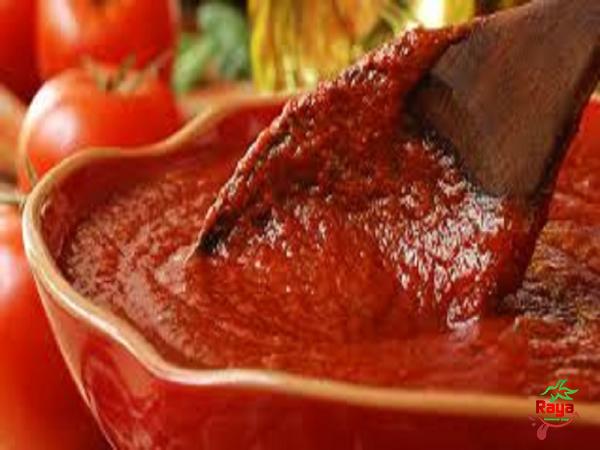
tomato paste
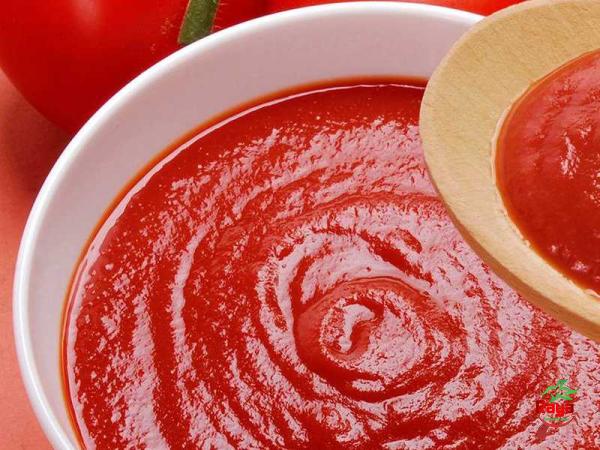 4. Combining Tomato Paste and Tomato Sauce: While tomato paste and tomato sauce serve different purposes, they can be used in combination to create more complex flavors. Combining tomato paste with tomato sauce can offer a balance between intense flavor and smoother consistency. This approach can be particularly useful in dishes where a stronger tomato flavor is desired. Conclusion: Understanding the distinctions between tomato paste and tomato sauce is essential for any home cook or aspiring chef. Tomato paste provides a concentrated tomato flavor and acts as a base ingredient, while tomato sauce offers a milder taste and greater versatility. By recognizing the differences in consistency, flavor profile, and culinary applications, individuals can make informed choices about which product to use and how much to incorporate into a variety of recipes. Whether it’s adding depth to a pasta sauce or enhancing the flavors of a stew, both tomato paste and tomato sauce play integral roles in elevating dishes and tantalizing taste buds.Tomato Paste vs Tomato Sauce: Understanding the Differences and Uses Introduction: Tomatoes have long been an essential ingredient in various cuisines around the world. From stews and soups to pasta dishes and pizzas, tomatoes add depth and flavor to countless recipes. Two common tomato-based products that often appear in recipes are tomato paste and tomato sauce. While these two ingredients may appear similar, they differ significantly in terms of their preparation, consistency, and culinary applications. In this article, we will delve into the characteristics, uses, and benefits of tomato paste and tomato sauce to help readers understand the differences between these popular tomato products. 1. Tomato Paste: Tomato paste is a thick, concentrated tomato product prepared by cooking tomatoes for an extended period, removing their skin and seeds, and reducing them to a thick consistency. This process condenses the flavors of the tomatoes, creating a rich, intense, and slightly sweet taste. Tomato paste is generally advised to be used in smaller quantities due to its intense flavor and concentrated consistency. Uses: Tomato paste is widely used as a base ingredient in various dishes. It is commonly used to add depth and richness to pasta sauces, soups, stews, and braises. Additionally, it finds application in marinades, gravies, and curry recipes. Cooking tomato paste briefly in oil (a process called “blooming”) helps to mellow its flavor, balancing the intensity and reducing any bitterness. Benefits: Tomato paste offers a number of benefits due to its high concentration of antioxidants, essential vitamins (such as vitamin A and C), and minerals (such as potassium). It also contains lycopene, a powerful antioxidant known for its potential health benefits, including reducing the risk of certain types of cancer and promoting heart health.
4. Combining Tomato Paste and Tomato Sauce: While tomato paste and tomato sauce serve different purposes, they can be used in combination to create more complex flavors. Combining tomato paste with tomato sauce can offer a balance between intense flavor and smoother consistency. This approach can be particularly useful in dishes where a stronger tomato flavor is desired. Conclusion: Understanding the distinctions between tomato paste and tomato sauce is essential for any home cook or aspiring chef. Tomato paste provides a concentrated tomato flavor and acts as a base ingredient, while tomato sauce offers a milder taste and greater versatility. By recognizing the differences in consistency, flavor profile, and culinary applications, individuals can make informed choices about which product to use and how much to incorporate into a variety of recipes. Whether it’s adding depth to a pasta sauce or enhancing the flavors of a stew, both tomato paste and tomato sauce play integral roles in elevating dishes and tantalizing taste buds.Tomato Paste vs Tomato Sauce: Understanding the Differences and Uses Introduction: Tomatoes have long been an essential ingredient in various cuisines around the world. From stews and soups to pasta dishes and pizzas, tomatoes add depth and flavor to countless recipes. Two common tomato-based products that often appear in recipes are tomato paste and tomato sauce. While these two ingredients may appear similar, they differ significantly in terms of their preparation, consistency, and culinary applications. In this article, we will delve into the characteristics, uses, and benefits of tomato paste and tomato sauce to help readers understand the differences between these popular tomato products. 1. Tomato Paste: Tomato paste is a thick, concentrated tomato product prepared by cooking tomatoes for an extended period, removing their skin and seeds, and reducing them to a thick consistency. This process condenses the flavors of the tomatoes, creating a rich, intense, and slightly sweet taste. Tomato paste is generally advised to be used in smaller quantities due to its intense flavor and concentrated consistency. Uses: Tomato paste is widely used as a base ingredient in various dishes. It is commonly used to add depth and richness to pasta sauces, soups, stews, and braises. Additionally, it finds application in marinades, gravies, and curry recipes. Cooking tomato paste briefly in oil (a process called “blooming”) helps to mellow its flavor, balancing the intensity and reducing any bitterness. Benefits: Tomato paste offers a number of benefits due to its high concentration of antioxidants, essential vitamins (such as vitamin A and C), and minerals (such as potassium). It also contains lycopene, a powerful antioxidant known for its potential health benefits, including reducing the risk of certain types of cancer and promoting heart health.
Specifications of tomato paste
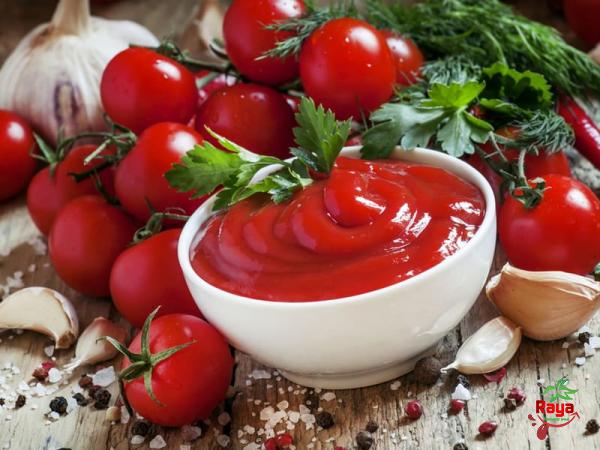 2. Tomato Sauce: Tomato sauce, on the other hand, refers to a cooked sauce made primarily from tomatoes but includes a variety of additional ingredients such as onions, garlic, herbs, and spices. This results in a smoother, more liquid consistency compared to tomato paste. Tomato sauce typically has a milder flavor profile compared to tomato paste since it is diluted by other ingredients. Uses: Tomato sauce is the go-to ingredient for several classic dishes. It is commonly used as a base for pasta sauces, pizza sauces, and as a dip for appetizers like mozzarella sticks. Tomato sauce is versatile and can be seasoned and customized based on personal preferences or specific recipes. Benefits: While tomato sauce may have slightly fewer nutritional benefits compared to tomato paste due to its dilution with other ingredients, it is still a source of vitamins, minerals, and antioxidants. Tomato sauce can contribute to a healthy diet and its versatility allows for various recipes to incorporate this ingredient into a balanced meal. 3. Key Differences: Consistency: Tomato paste is thick and concentrated, while tomato sauce has a smoother and more liquid consistency. Flavor: Tomato paste offers a powerful, intense flavor, while tomato sauce has a milder taste due to additional ingredients. Culinary Use: Tomato paste is often used as a base or flavor enhancer in various dishes, whereas tomato sauce is used as a standalone, versatile sauce or topping. Quantity: Due to its concentrated nature, tomato paste is typically used in smaller quantities, while tomato sauce is used in larger quantities to achieve desired consistency and flavor. 4. Combining Tomato Paste and Tomato Sauce: While tomato paste and tomato sauce serve different purposes, they can be used in combination to create more complex flavors. Combining tomato paste with tomato sauce can offer a balance between intense flavor and smoother consistency. This approach can be particularly useful in dishes where a stronger tomato flavor is desired. 5. Culinary Uses for Tomato Paste: a) Soups and Stews: Tomato paste adds depth and richness to soups and stews. It acts as a natural thickener and infuses the dish with a concentrated tomato flavor. b) Pasta Sauces: Tomato paste is a staple ingredient in pasta sauces. It is typically added to sautéed onion and garlic before adding other ingredients like meat, vegetables, or herbs. c) Gravies and Marinades: Tomato paste can enhance the flavor of gravies and marinades, providing a tangy and robust taste that complements meats, poultry, and seafood. d) Curries: Tomato paste can be used as a base for curries, adding a distinct tomato flavor that balances the heat and spices of the dish.
2. Tomato Sauce: Tomato sauce, on the other hand, refers to a cooked sauce made primarily from tomatoes but includes a variety of additional ingredients such as onions, garlic, herbs, and spices. This results in a smoother, more liquid consistency compared to tomato paste. Tomato sauce typically has a milder flavor profile compared to tomato paste since it is diluted by other ingredients. Uses: Tomato sauce is the go-to ingredient for several classic dishes. It is commonly used as a base for pasta sauces, pizza sauces, and as a dip for appetizers like mozzarella sticks. Tomato sauce is versatile and can be seasoned and customized based on personal preferences or specific recipes. Benefits: While tomato sauce may have slightly fewer nutritional benefits compared to tomato paste due to its dilution with other ingredients, it is still a source of vitamins, minerals, and antioxidants. Tomato sauce can contribute to a healthy diet and its versatility allows for various recipes to incorporate this ingredient into a balanced meal. 3. Key Differences: Consistency: Tomato paste is thick and concentrated, while tomato sauce has a smoother and more liquid consistency. Flavor: Tomato paste offers a powerful, intense flavor, while tomato sauce has a milder taste due to additional ingredients. Culinary Use: Tomato paste is often used as a base or flavor enhancer in various dishes, whereas tomato sauce is used as a standalone, versatile sauce or topping. Quantity: Due to its concentrated nature, tomato paste is typically used in smaller quantities, while tomato sauce is used in larger quantities to achieve desired consistency and flavor. 4. Combining Tomato Paste and Tomato Sauce: While tomato paste and tomato sauce serve different purposes, they can be used in combination to create more complex flavors. Combining tomato paste with tomato sauce can offer a balance between intense flavor and smoother consistency. This approach can be particularly useful in dishes where a stronger tomato flavor is desired. 5. Culinary Uses for Tomato Paste: a) Soups and Stews: Tomato paste adds depth and richness to soups and stews. It acts as a natural thickener and infuses the dish with a concentrated tomato flavor. b) Pasta Sauces: Tomato paste is a staple ingredient in pasta sauces. It is typically added to sautéed onion and garlic before adding other ingredients like meat, vegetables, or herbs. c) Gravies and Marinades: Tomato paste can enhance the flavor of gravies and marinades, providing a tangy and robust taste that complements meats, poultry, and seafood. d) Curries: Tomato paste can be used as a base for curries, adding a distinct tomato flavor that balances the heat and spices of the dish.
buy tomato paste
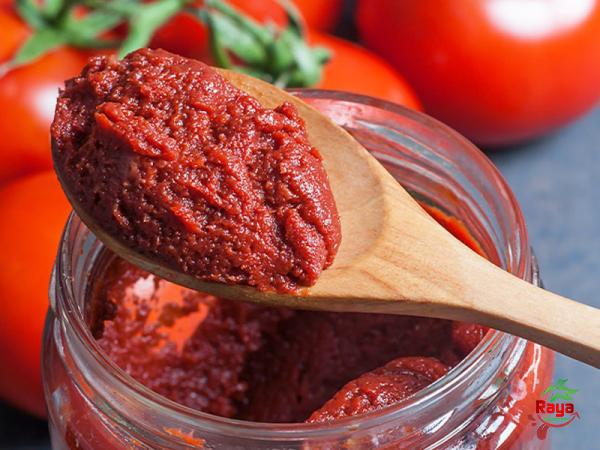 6. Culinary Uses for Tomato Sauce: a) Pasta dishes: Tomato sauce is a common base for pasta dishes like spaghetti Bolognese or marinara sauce. It is the foundation that binds other ingredients, creating a flavorful and balanced sauce. b) Pizza sauce: Tomato sauce is a crucial ingredient in pizza-making. It provides a vibrant and tangy flavor that complements the cheese and toppings. c) Dips and Spreads: Tomato sauce can be used as a dip for appetizers like mozzarella sticks or as a spread for sandwiches and wraps. Its smooth consistency makes it easy to spread and enjoy. d) Simmered Meat and Vegetables: Tomato sauce can be used to simmer meats and vegetables, resulting in tender and flavorful dishes such as ratatouille or braised chicken. 7. Shelf Life and Storage: Tomato paste typically has a longer shelf life compared to tomato sauce. Tomato paste, when stored in an airtight container and refrigerated, can last for up to six months. On the other hand, tomato sauce, especially when homemade and without preservatives, has a shorter shelf life and is best consumed within a few days or stored in the freezer for longer-term preservation. 8. Considerations for Cooking with Tomato Paste and Tomato Sauce: a) When using tomato paste, it is recommended to bloom it in oil or cook it briefly to remove any raw taste and to enhance its flavor. b) Tomato sauce can be seasoned with additional herbs, spices, or other ingredients to personalize the taste and create a unique sauce for various recipes. c) Both tomato paste and tomato sauce can be adjusted in quantity to achieve the desired taste and consistency of a dish. 9. Nutritional Comparison: Tomato paste is generally more nutrient-dense than tomato sauce due to its higher concentration of tomatoes. Tomato paste has a higher content of vitamins A and C, potassium, and lycopene. However, both tomato paste and tomato sauce provide health benefits and contribute to a well-rounded diet. 10. Choosing Between Tomato Paste and Tomato Sauce: The decision to use tomato paste or tomato sauce in a recipe depends on several factors, including the desired flavor profile, consistency, and the specific recipe’s requirements. Tomato paste is best suited for recipes where a deep, concentrated tomato flavor is desired, while tomato sauce works well when a milder taste and smoother consistency are desired. Conclusion: Tomato paste and tomato sauce play integral roles in countless recipes, providing distinct flavors and enhancing the taste of dishes. Understanding the differences between tomato paste and tomato sauce, including their uses, flavor profiles, and culinary applications, helps home cooks and chefs make informed choices when selecting the perfect tomato-based ingredient for their creations. Whether one wants to add depth and richness to a sauce or create a versatile base for various dishes, tomato paste and tomato sauce offer limitless possibilities to elevate the dining experience.
6. Culinary Uses for Tomato Sauce: a) Pasta dishes: Tomato sauce is a common base for pasta dishes like spaghetti Bolognese or marinara sauce. It is the foundation that binds other ingredients, creating a flavorful and balanced sauce. b) Pizza sauce: Tomato sauce is a crucial ingredient in pizza-making. It provides a vibrant and tangy flavor that complements the cheese and toppings. c) Dips and Spreads: Tomato sauce can be used as a dip for appetizers like mozzarella sticks or as a spread for sandwiches and wraps. Its smooth consistency makes it easy to spread and enjoy. d) Simmered Meat and Vegetables: Tomato sauce can be used to simmer meats and vegetables, resulting in tender and flavorful dishes such as ratatouille or braised chicken. 7. Shelf Life and Storage: Tomato paste typically has a longer shelf life compared to tomato sauce. Tomato paste, when stored in an airtight container and refrigerated, can last for up to six months. On the other hand, tomato sauce, especially when homemade and without preservatives, has a shorter shelf life and is best consumed within a few days or stored in the freezer for longer-term preservation. 8. Considerations for Cooking with Tomato Paste and Tomato Sauce: a) When using tomato paste, it is recommended to bloom it in oil or cook it briefly to remove any raw taste and to enhance its flavor. b) Tomato sauce can be seasoned with additional herbs, spices, or other ingredients to personalize the taste and create a unique sauce for various recipes. c) Both tomato paste and tomato sauce can be adjusted in quantity to achieve the desired taste and consistency of a dish. 9. Nutritional Comparison: Tomato paste is generally more nutrient-dense than tomato sauce due to its higher concentration of tomatoes. Tomato paste has a higher content of vitamins A and C, potassium, and lycopene. However, both tomato paste and tomato sauce provide health benefits and contribute to a well-rounded diet. 10. Choosing Between Tomato Paste and Tomato Sauce: The decision to use tomato paste or tomato sauce in a recipe depends on several factors, including the desired flavor profile, consistency, and the specific recipe’s requirements. Tomato paste is best suited for recipes where a deep, concentrated tomato flavor is desired, while tomato sauce works well when a milder taste and smoother consistency are desired. Conclusion: Tomato paste and tomato sauce play integral roles in countless recipes, providing distinct flavors and enhancing the taste of dishes. Understanding the differences between tomato paste and tomato sauce, including their uses, flavor profiles, and culinary applications, helps home cooks and chefs make informed choices when selecting the perfect tomato-based ingredient for their creations. Whether one wants to add depth and richness to a sauce or create a versatile base for various dishes, tomato paste and tomato sauce offer limitless possibilities to elevate the dining experience.

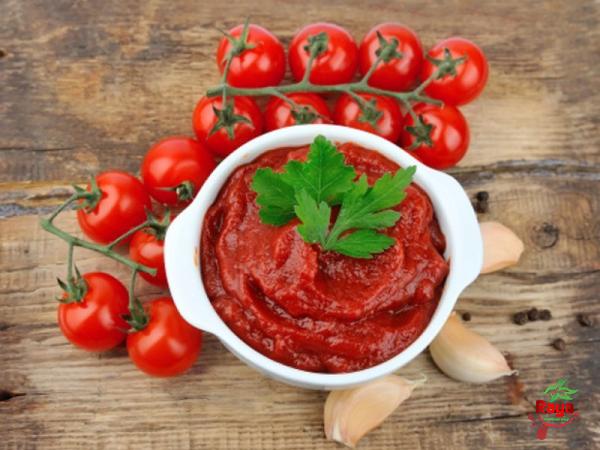
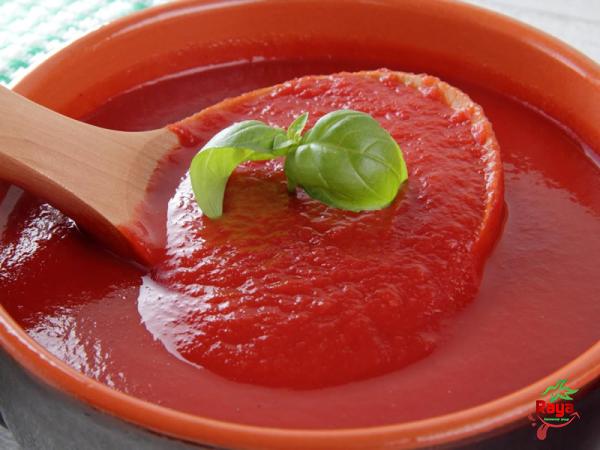
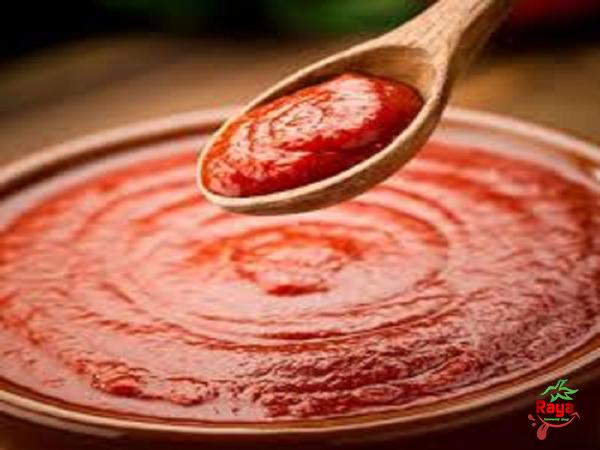

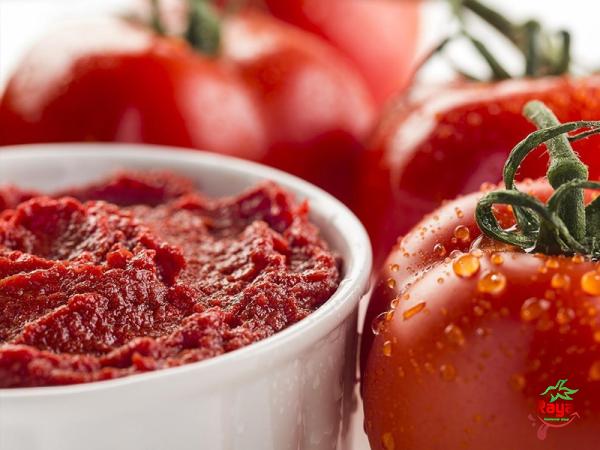
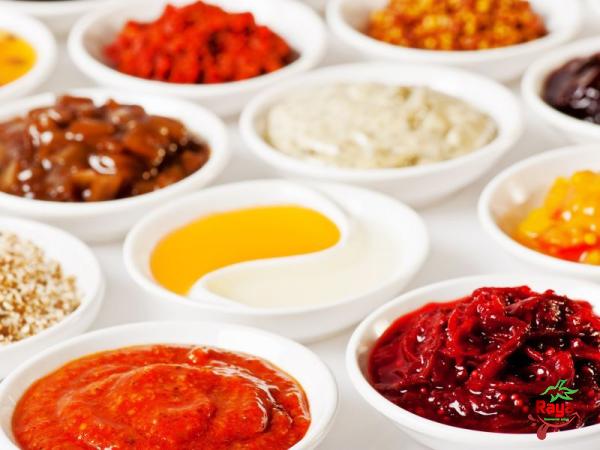


Your comment submitted.